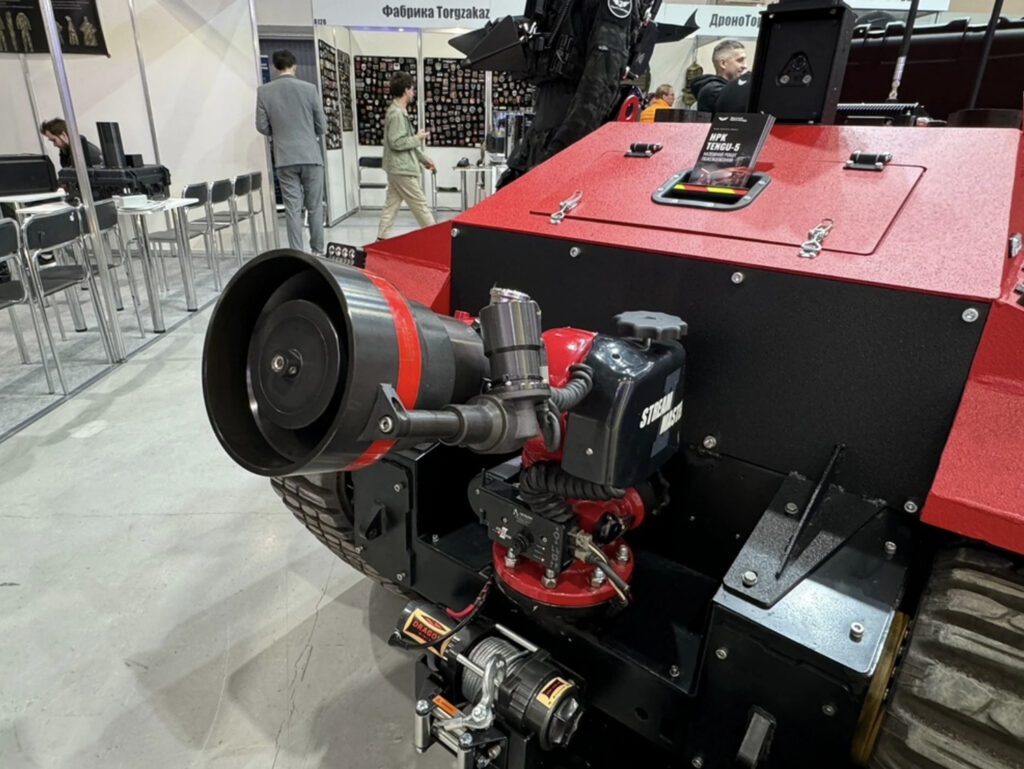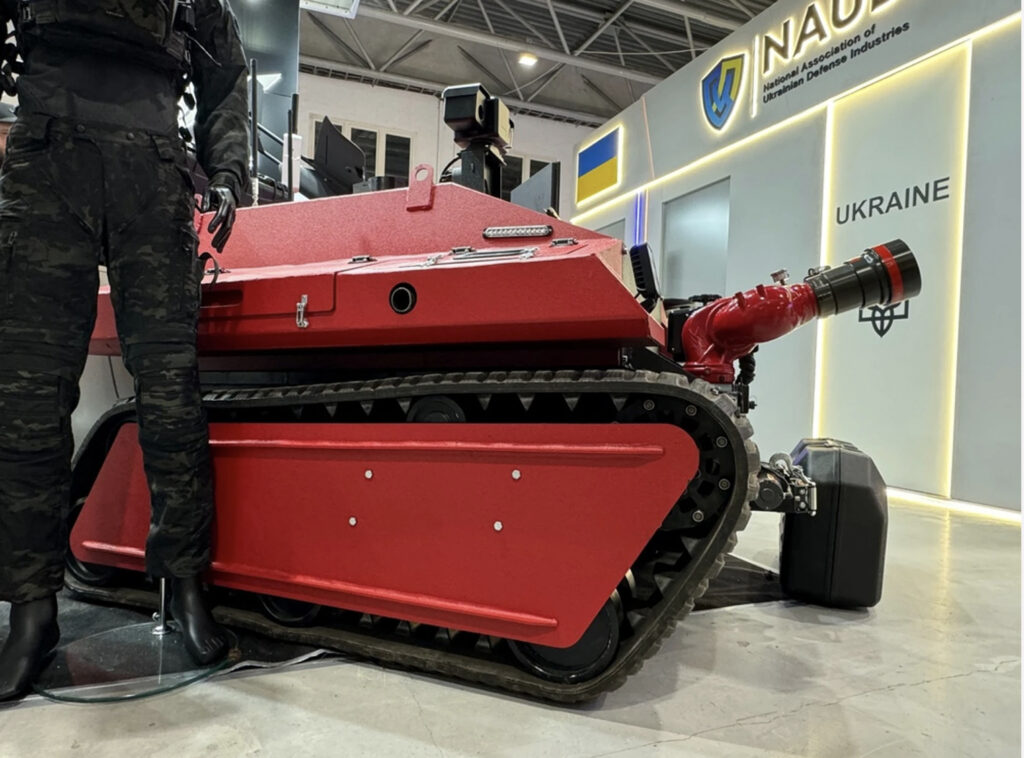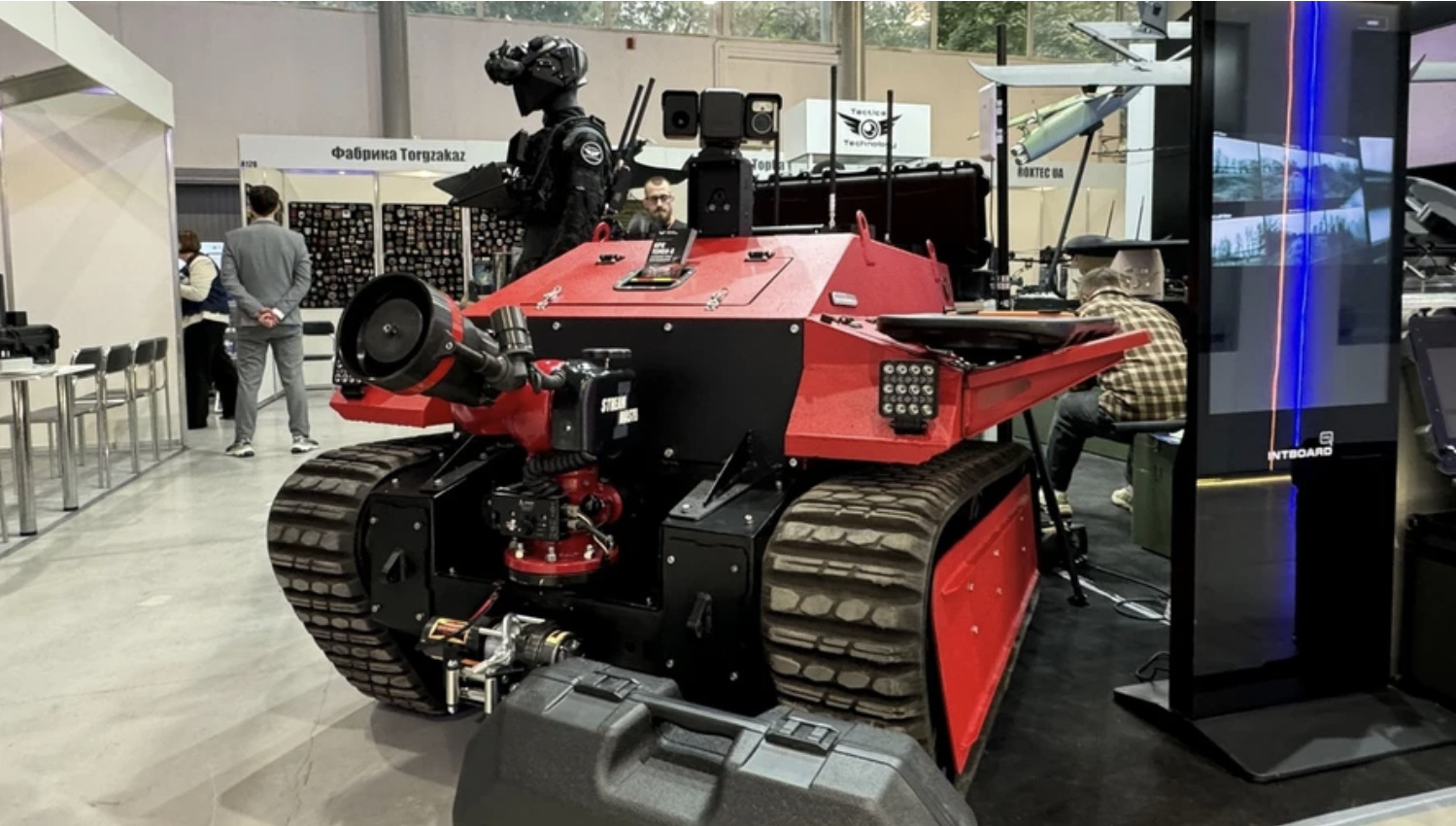Ukraine has unveiled a ground-based robotic system capable of extinguishing fires at military and energy infrastructure where human responders cannot safely operate, according to presentations at the SECURITY 2.0 exhibition in Kyiv.
Ukraine's state-owned gas company Naftogaz and the Ministry of Energy reported hits and destruction at civilian gas infrastructure sites, while equipment damage at Zaporizhzhiaoblenergo caused widespread blackouts in Zaporizhzhia city and district.
Naftogaz Chairman Serhiy Koretskyi stated the attacked facilities carry no military significance and described the strikes as "maniacal terrorist attacks" aimed solely at depriving Ukrainians of gas, heat, and electricity.
The situation remains difficult in Sumy and Chernihiv oblasts, where Russian forces struck again, leaving hourly power outage schedules in effect while emergency restoration work continues.
The Tengu-5 robotic complex was developed at the request of the State Emergency Service (SES) of Ukraine to address firefighting scenarios at high-risk locations including:
- chemical plants
- oil and gas wells
- oil pumping stations
- ammunition or chemical storage facilities.
The system operates by trailing a water hose connected to either a fire truck or another water source while moving toward the fire zone.
This configuration allows the robot to function up to one kilometer from rescue personnel, according to Tactical Technology, the company behind the development, Oboronka reports.
For water deployment, the robot carries a StreamMaster II high-performance monitor mounted on specialized fixtures. The device projects water onto burning structures while the operator remains at a safe distance.
The current prototype utilizes a Chinese tracked chassis fitted with a domestically produced armored platform.


Tactical Technology reports the platform meets STANAG 4569 level 1 protection standards, providing shielding against shrapnel. The company has completed technical documentation for an indigenous chassis that will replace the imported component once serial production begins.
The robot's chassis houses a 2.2-liter diesel engine enabling speeds up to 10 kilometers/hour.
A two-ton capacity winch is mounted on the front frame. Internal systems include:
- the engine
- water supply mechanisms
- life support equipment
- maintenance access hatches.
Sensor equipment consists of camera arrays with 30x optical zoom capability and thermal imaging. The left side features mounting space for evacuation stretchers. An optional Morok-5 electronic warfare system can be installed as needed.
Tactical Technology envisions deployment near critical energy infrastructure or at emergency response stations, where the Tengu-5 would operate alongside conventional State Emergency Service equipment. The system is scheduled to undergo testing before potential operational deployment.




